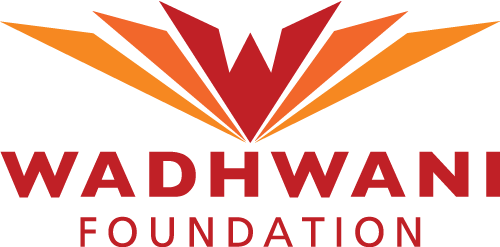Por Kamal Das
Transformação digital é uma palavra muito usada e maltratada, com muitos usuários atribuindo vários significados diferentes a ela. Muitas vezes, a transformação digital é confundida com digitalização ou digitalização. Em outras ocasiões, partes das transformações digitais são implementadas de maneira descuidada, resultando em um caos contínuo em vez de apresentar uma solução.
O Dr. George Westerman, Cientista Pesquisador Principal da J-WEL Workforce and Learning, Professor Sênior da MIT Sloan School of Management, descreveu isso da melhor forma: "Quando a transformação digital é bem feita, é como uma lagarta se transformando em borboleta, mas quando é mal feita, tudo o que se tem é uma lagarta muito rápida".
Qual é a diferença entre digitalização, digitalização e transformação digital?
A digitalização é o processo de conversão de um processo manual em um processo digital. Por exemplo, alguns "escritórios sem papel" transferem cópias digitalizadas de documentos físicos. Essas cópias digitalizadas ainda passam pelo processo anterior. Temos uma movimentação mais rápida dos papéis ("lagartas mais rápidas"), mas não há melhoria no processo em si. O arquivo ainda é transferido de um escritório para outro, aguardando assinaturas e entradas, e o remetente precisa enviar o documento digitalizado por e-mail para a próxima pessoa na hierarquia ou para outros departamentos, como o financeiro ou jurídico, para aprovação. A eliminação do papel tornou os arquivos mais rápidos, mas o processo permanece inalterado.
Digitalização é o aprimoramento de um processo manual usando tecnologia. Por exemplo, todos os departamentos e pessoas em uma organização estão conectados e têm acesso a um aplicativo que lhes permite ver o status de vários itens no fluxo de trabalho. Eles sabem onde um determinado arquivo está parado. Depois que uma pessoa conclui seu trabalho em um item, ele passa automaticamente para a próxima pessoa necessária para as entradas e a próxima ação. A lagarta (papel/arquivos) se moverá ainda mais rápido, mas continuará sendo uma lagarta. A adoção de bancos de dados, ferramentas de planejamento de recursos empresariais (ERP) e sistemas de informações de gerenciamento de recursos humanos (MIS de RH) levam à digitalização. Eles nem sempre levam à transformação digital.
A transformação digital requer, como o próprio nome sugere, "transformação". A lagarta não se torna uma lagarta mais rápida, ela precisa se transformar (ou se metamorfosear) em uma borboleta. A transformação digital precisa criar valor para o usuário final ou para a empresa. Ela precisa de uma abordagem centrada no ser humano. Ela precisa agregar valor e fazer com que as várias partes interessadas estejam no centro da mudança. Vamos ver isso usando um exemplo.
Como parte do meu convênio médico pessoal (sem nomes, pois não se trata de identificar nenhuma entidade), recebo exames médicos semestrais gratuitos. Fiz um deles no primeiro fim de semana de setembro. O processo foi phygital (físico + digital), era possível fazer o agendamento on-line e receber uma confirmação da seguradora de saúde por telefone antes do check-up propriamente dito. Recebi uma ligação telefônica, um SMS e um e-mail confirmando a visita. As amostras de sangue foram coletadas e o relatório seria compartilhado em alguns dias. Recebi um e-mail compartilhando meu relatório de saúde anterior (feito há 6 meses).
Por razões desconhecidas, o sistema não registrou a visita e o exame médico. Depois de algumas consultas, os executivos da central de atendimento do seguro médico me informaram que não tinham novos relatórios e que não sabiam que o exame de saúde havia sido concluído! Ainda estou aguardando a atualização sobre o que deu errado.
A empresa de seguro médico foi transformada ou a digitalização apenas a transformou em uma lagarta mais rápida?
Uma experiência transformada digitalmente colocaria o cliente no centro da transformação. Haveria um aperto de mão ou feedback após a experiência e uma verificação se o exame de saúde foi concluído ou não. Caso o exame de saúde não tenha sido concluído (profissional médico indisponível), ele deverá ser reagendado. Caso o profissional médico tenha perdido as amostras de sangue, um pedido de desculpas e a solicitação de uma nova amostra podem ser feitos. Os clientes sabem que erros acontecem. No entanto, o sistema em vigor não foi capaz de se transformar em um avatar centrado no cliente.
Ao analisarmos a transformação digital, muitas vezes nos concentramos em lagartas mais rápidas. Não visualizamos a borboleta.
No espaço do setor público (como em muitas outras empresas), o tratamento de reclamações continua sendo uma questão delicada. Vamos considerar o exemplo de uma senhora idosa com um cartão abaixo da linha de pobreza (BPL) em um vilarejo remoto. Ela não recebeu sua aposentadoria por idade. Ela pode ir de funcionário em funcionário para descobrir qual é a situação.
Agora vamos imaginar o que a transformação digital pode trazer para a mesa. A senhora poderia ligar para um número de telefone de reclamação de pensão. Um bot de voz (ou humano) atenderia a ligação e entenderia sua reclamação - ela não havia recebido sua pensão por idade nos últimos meses. O bot de voz capturaria seus detalhes e prometeria uma atualização em alguns dias.
Depois de alguns dias, o bot de voz ligava de volta e confirmava o status. Caso o problema fosse resolvido no registro "e" confirmado pela senhora, ele seria encerrado. Se a senhora continuasse preocupada, o sistema escalaria automaticamente para níveis mais altos e garantiria a resolução. Ela ficaria irritada por ter sido erroneamente marcada como resolvida, mas ficaria impressionada com o fato de que as próximas etapas da resolução seriam realizadas sem nenhum esforço adicional de sua parte. Um aperto de mão/feedback de confirmação continuaria a ser recebido e a ser aplicado até que a questão fosse resolvida.
A centralização proativa no cidadão requer uma mentalidade de transformação que se concentre na essência de que a resolução para a satisfação do usuário final é imperativa. A verdadeira transformação redefine o valor oferecido e garante a satisfação do usuário final.
À medida que avançamos em direção a mais exercícios de transformação digital, esperamos ver mais borboletas, e não lagartas mais rápidas!




